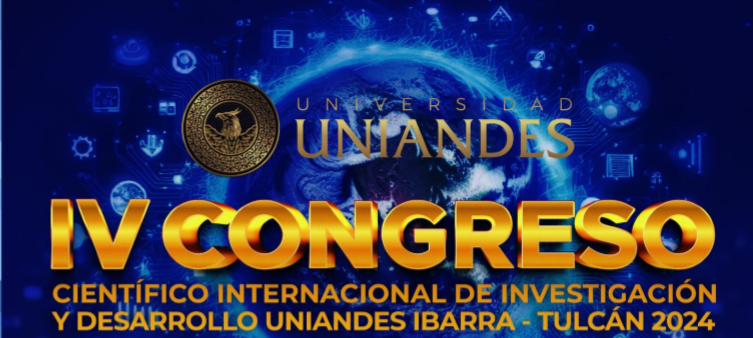Cementation strategies in zirconia restorations. Bonding agents and mechanical strength
Abstract
Adhesive cementation of zirconia restorations is a challenge in dentistry due to its low surface reactivity. The aim of this literature review is to provide an updated description of zirconia adhesive cementation, its mechanical strength and clinical longevity. A search was carried out in PubMed and Scopus, using key terms such as “Zirconia bonding” and “Adhesive cementation zirconia crown”. Ninety-three articles were identified, of which 64 were selected and 16 were included after applying inclusion and exclusion criteria. The reviewed studies indicate that effective zirconia bonding requires internal surface preparation with mechanical (sandblasting with aluminum oxide) and chemical (primers with 10-MDP) treatments. In addition, it was concluded that resin cements with functional monomers offer more stable adhesion compared to conventional cements. In conclusion, the combination of adequate pretreatment and the choice of bonding agent influence the mechanical strength and longevity of the restoration. The use of 10-MDP resin cements and proper zirconia preparation have proven to be the most effective strategies to optimize adhesion and improve clinical success.
Keywords: adhesive cementation, monolithic zirconia, mechanical strength
Downloads
References
Alido Fra AL, Naranjo Martín RS, Gómez Vinent D, Naranjo Rojas DE, Fra Santos I. Alternativas de tratamiento empleadas en pacientes con alteraciones estéticas odontológicas del Policlínico “5 de septiembre. Univ Méd Pinareña. 2021 [citado 12/02/2024]; 17(3):685. Disponible en: http://www.revgaleno.sld.cu/index.php/ump/article/view/685
Villacrés Yancha DM, Marín Vega GX, Miranda Anchundia AK. Pérdida ósea marginal al utilizar pilares de cicatrización de titanio frente a pilares de cicatrización personalizados de zirconio. Rev Ciencias Médicas. 2024 [citado 12/02/2024];28.(Suppl 2):6606. Disponible en: http://scieloprueba.sld.cu/scielo.php?script=sci_arttext&pid=S1561-31942024000700006&lng=es
Molina Washington PC, Caisaguano Jonathan WR, Núñez Ramos MA. Utilidad de la tecnología CAD/CAM en la fabricación de prótesis dentales. Medisur. 2023 [citado: 13/2/2024]; 21(6): 1305-1311. Disponible en: http://scielo.sld.cu/scielo.php?script=sci_arttext&pid=S1727897X2023000601305&lng=es
Daou EE. La cerámica zirconia: fortalezas y debilidades. Abierto Dent J. 2014 [Citado: 13/02/2024];18;8:33-42 https://pmc.ncbi.nlm.nih.gov/articles/PMC4026739/
Taboada Alvear MF, Farfan K. Adhesión y microfiltración en restauraciones de zirconia. Revisión teórica. RECIMUNDO. 21 de abril de 2025 [citado 13/02/2024]; 9(2):66-82. Disponible en: https://recimundo.com/index.php/es/article/view/2581
Alanazi EM, Alshammari AK, Malki AT, Alghelaiqah KF, Akbar LF. A Comprehensive Review of Techniques for Enhancing Zirconia Bond Strength: Current Approaches and Emerging Innovations. Cureus. 2024 [citado 13/2/2024];16(10) Disponible en: https://pmc.ncbi.nlm.nih.gov/articles/PMC11534439/
Sorrentino R, Triulzio C, Tricarico MG, Bonadeo G, Gherlone EF, Ferrari M. In vitro analysis of the fracture resistance of CAD-CAM monolithic zirconia molar crowns with different occlusal thickness. J Mech Behav Biomed Mater. 2016 [citado 13/02/2024];61:328–33. Disponible en: https://pubmed.ncbi.nlm.nih.gov/27104931/
Worni A, Katsoulis J, Kolgeci L, Worni M, Mericske-Stern R. Monolithic zirconia reconstructions supported by teeth and implants: 1- to 3-year results of a case series. Quintessence Int (Berl). 2017 [citado 13/02/2024];48(6):459-467. Disponible en: https://pubmed.ncbi.nlm.nih.gov/28462405/
Cheng CW, Chien CH, Chen CJ, Papaspyridakos P. Clinical Results and Technical Complications of Posterior Implant-Supported Modified Monolithic Zirconia Single Crowns and Short-Span Fixed Dental Prostheses: A 2-Year Pilot Study. J Prosthodont. 2018 Feb [citado 13/02/2024]; 27(2):108–114. Disponible en: https://pubmed.ncbi.nlm.nih.gov/29086467/
Gunge H, Ogino Y, Kihara M, Tsukiyama Y, Koyano K. Retrospective clinical evaluation of posterior monolithic zirconia restorations after 1 to 3.5 years of clinical service. J Oral Sci. 2018 Marz [citado 13/02/2024];60(1):154–158. Disponible en: https://pubmed.ncbi.nlm.nih.gov/29311501/
Blatz MB, Vonderheide M, Conejo J. The Effect of Resin Bonding on Long-Term Success of High-Strength Ceramics. J Dent Res. 2018 feb [citado: 13/02/2024];97(2):132–139. Disponible en: https://pubmed.ncbi.nlm.nih.gov/28876966/
Kern M, Passia N, Sasse M, Yazigi C. Ten-year outcome of zirconia ceramic cantilever resin-bonded fixed dental prostheses and the influence of the reasons for missing incisors. J Dent. 2017 [citado 13/02/2024];65(1):51–55. Disponible en: https://pubmed.ncbi.nlm.nih.gov/28688950/
Zarone F, Di Mauro MI, Ausiello P, Ruggiero G, Sorrentino R. Current status on lithium disilicate and zirconia: A narrative review. BMC Oral Health. 2019 [citado:13/02/2024];19(1):134. Disponible en: https://pubmed.ncbi.nlm.nih.gov/31272441/
Altan B, Cinar S, Tuncelli B. Evaluation of Shear Bond Strength of Zirconia- Based Monolithic CAD-CAM Materials to Resin Cement after Different Surface Treatments. Niger J Clin Pract. 2019 [citado: 13/02/2024]; 22(11):1475-1482. Disponible en: https://pubmed.ncbi.nlm.nih.gov/31719267/
Le M, Larsson C, Papia E. Bond strength between MDP-based cement and translucent zirconia. Dent Mater J. 2019 [citado: 13/02/2024];1;38(3):480-489. Disponible en: https://pubmed.ncbi.nlm.nih.gov/31105161/
Monteiro RV, dos Santos DM, Bernardon JK, De Souza GM. Effect of surface treatment on the retention of zirconia crowns to tooth structure after aging. J Esthet Restor Dent. 2020 [citado: 13/02/2024];32(7):699-706. Disponible en: https://pubmed.ncbi.nlm.nih.gov/32627364/
Published
How to Cite
Issue
Section
License
Copyright (c) 2025 Jessica Sayonara Suárez López, Carlos Luis Villalva León, Johanna Elizabeth Fiallos Sánchez

This work is licensed under a Creative Commons Attribution-NonCommercial 4.0 International License.
ACCESS AND DISTRIBUTION POLICY
All published articles are open access contributions, which are distributed under the terms of the Creative Commons Attribution-NonCommercial 4.0 License which permits unrestricted non-commercial use, distribution and reproduction in any medium, provided that the primary source of publication is properly cited.




